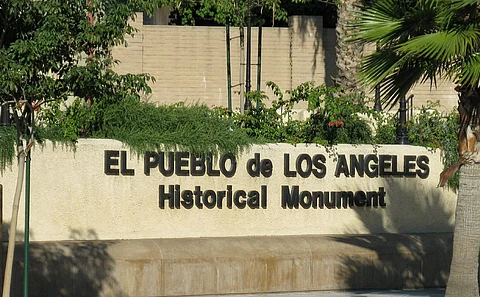

Los Angeles is in the news as raging wildfires have destroyed many neighbourhoods of America’s second-largest city.
Most people around the world know Los Angeles or ‘LA’ because of the glitz and glamour of Hollywood, which is actually a suburb of the city.
But the story of Los Angeles began long ago, in the late 1700s. It was time when the Spanish had established a large colonial empire in North and Central America.
The Spaniards had also sent expeditions to the area that is today the US state of California.
“After the passage of over 150 years’ time, in 1769 the Spanish, as described in the accounts of Layne (1934), fearing that it was urgent to take control of these strategic territories, finally set about establishing the first Missions, with four presidios at San Diego, Santa Barbara, Monterey, and San Francisco. It was in August of that year, that an expedition traveling up the coast, stopped to camp by a river they named Porciuncula, after the day known as Our Lady of Los Angeles de Porciuncula,” John T Metts from The University of Arizona Global Campus writes in his 2017 paper, The City of Los Angeles.
According to the US National Parks Service, “Presidios were colonial frontier military settlements intended to secure and defend Spain’s claim to territories occupied by indigenous populations. The people managing the presidios were part of the Spanish effort to successfully develop, expand, and protect settlement in the American Southwest.”
The expedition mentioned by Metts was led by Gaspar de Portolá, a colonial Spanish army officer and two Franciscan fathers, Junípero Serra and Juan Crespi.
Crespi named the river El Río de Nuestra Señora la Reina de los Ángeles de Porciúncula, meaning ‘the River of Our Lady, the Queen of the Angels of Porciuncula’.
In 1781, nearly 12 years after the expedition, the city of Los Angeles was founded.
“In September of 1781, under the direction of California’s appointed Governor Neve, the Pueblo of Los Angeles was finally commissioned (Williams, 1922, Kelsey, 1976, City of Los Angeles, 2017, et al). Neve, along with a detachment of soldiers, lead forty-four settlers to the site that would become the new Pueblo of Los Angeles,” writes Metts.
Eleven men, 11 women and 22 children were the first settlers of the El Pueblo de Nuestra Señora la Reina de los Ángeles, meaning ‘the Town of Our Lady, the Queen of the Angels’.
Metts notes, “The Pueblo, as described in some detail by Layne (1934), was laid out in traditional fashion, along the banks of the Porciuncula River; the original name of the Los Angeles River, named after the Nuestra Senora de Los Angeles. The city of Los Angeles was officially born.”
According to the official website of the City of Los Angeles, “Historically, the areas of present-day Los Angeles was home to the Chumash and Tongva Native American tribes. On September 4, 1781 a group of settlers consisting of 14 families numbering 44 individuals of Native American, African and European heritage journeyed more than one-thousand miles across the desert from present-day northern Mexico and established a farming community in the area naming it “El Pueblo de Nuestra Señora la Reina de los Ángeles de Porciúncula” which in English translated to “The Town of Our Lady the Queen of the Angels of Porciúncula”. Over time this community would grow under the flags of Spain, Mexico and eventually the United States to become one of the largest metropolitan cities in the world, the City of Los Angeles.”